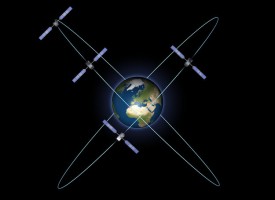
Galileo satellites ‘in orbit’
Recently, the European Space Agency (ESA) successfully completed the ‘In Orbit Validation’ of the Galileo Global Navigation Satellite System. There are now four Galileo satellites in orbit around the Earth, two operational Ground Control Centres and a global network of ground stations. ESA and its industrial partners have demonstrated that everything is working as intended and that the navigation signals are of the required quality. The successful test marks the start of the next phase. Eventually there will be thirty satellites providing permanent coverage of the entire planet.
Although it will be several years before all thirty satellites have been launched, the Galileo navigation system is expected to become available for general use by the end of 2014.NLR has contributed to the development of Galileo in several ways. It designed test systems used to validate components which ensure the extreme accuracy of the clocks used both in the satellites and on the ground, as well as systems to test the communication between the satellites and end users. The NLR also helped to design and implement the security measures which will ensure that Galileo continues to function reliably at all times. In November 2013, an NLR laboratory aircraft was the first to use the Galileo navigation signals to plot its exact position.
The European Navigation Conference ENC-GNSS 2014Â was held in Rotterdam from 15 to 17 April. The programme includes several presentations by the ESA about the results of the recent In Orbit Validation phase and the test flights made in November last year. Dutch experts from NLR will give a number of presentations on the use of satellite navigation in critical applications such as aviation, and how Galileo can be used as a communications system in the event of a large-scale disaster.
Also visit our Satellite Navigation capability page.


